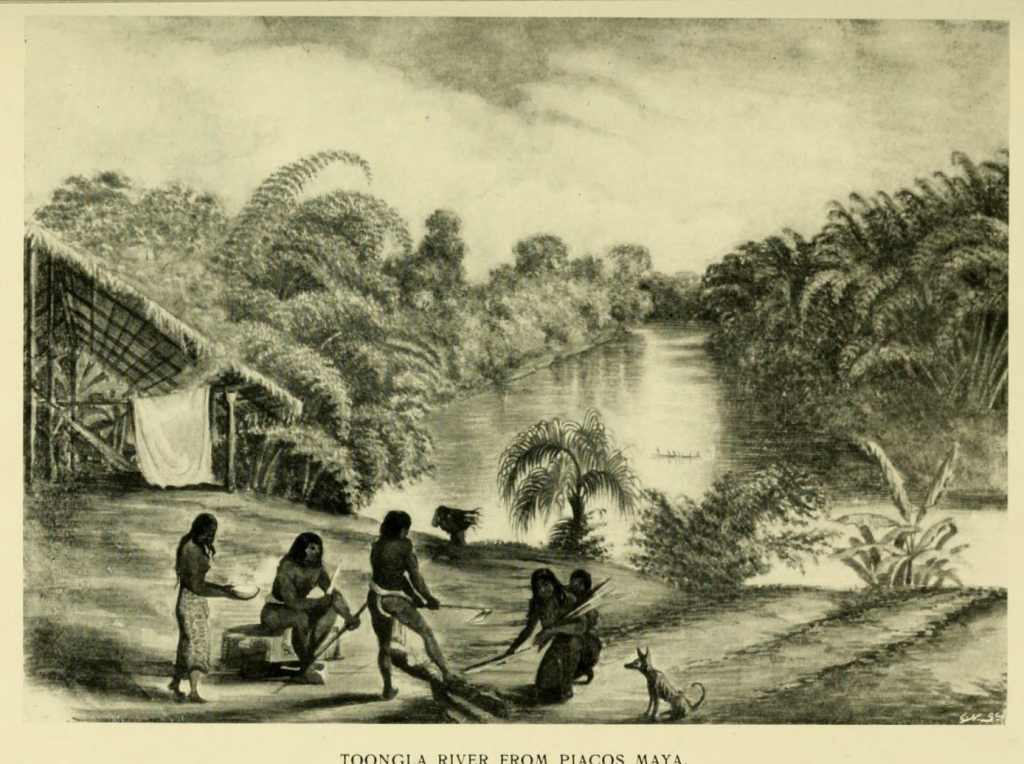
The novel Tangweera: Life and Adventures Among Gentle Savages, written by C. Napier Bell, is about Bell when he spent time in Nicaragua as a young man in the early 1800s. In his introduction, Bell expresses his fondness for Nicaragua’s indigenous people and its landscape. At the time of his travels, Latin America had just undergone a series of political changes, including the liberation of most Latin American states and the dissolution of the Central American Republic, of which Nicaragua had been a part of (Chasteen 2016, 139). In his book, Bell describes his various travels in Nicaragua and his encounters with its native people, including “Creole language and character” and “Feast of the dead ” (Bell 1899, vii-viii).
Bell’s description of Nicaragua has an air of fondness for the country and its people. However, the colonizer’s belief in his superiority creeps out. The author holds admiration and respect for his surroundings but as a place for reprieve and him to explore, not as the home and native land of Nicaragua’s people. Bell speaks of a lovely village where they sent “fever patients” to get better and where he and his companions made “holiday trips” for a reprieve from the “gloom of the bush” (Bell 1899, 161). This snippet from his book illustrates how even though he enjoys the beauty of Nicaragua, he does not hold the proper amount of respect for the people. Bell uses their home as a reprieve for himself. The fact that Bell felt as though an indigenous village was his own place for reprieve indicates that he felt that he was better than the villagers and had power over them because he was white. That Bell also felt he could send his sick to their village and they would take care of them illustrates his belief in having power over the indigenous people of Nicaragua.
During Bell’s travels, the Spanish had ruled Nicaragua for hundreds of years. However, during that time, the majority of the countries in Latin America were becoming independent. Nicaragua gained independence from Spain in 1821 (National Geographic Kids). Bell published the book in 1899 and did not state precisely when he was in Nicaragua, but he does mention it was when he was young. Assuming it was early to mid-1800s, Nicaraguans were used to seeing and being treated as lesser than white people, so it is not surprising that the villagers were willing to take in sick white people to nurse them back to health. This travelogue reveals how many white people had no problem intensely appreciating the landscape but did not hold that same appreciation for the people. Although Bell does talk about how he was friends with some of the natives, he still uses their village, their home, as a place for himself and his men. He very obviously does not truly respect them as human beings but sees them more as a means to an end.
Bibliography
Bell, Charles N. “Chapter IX.” Tangweera: Life and Adventure Among Gentle Savages, E. Arnold, London, 1899, pp. 157–167. https://archive.org/details/tangweeralifeadv00bell/page/166/mode/1up?view=theater
Chasteen, John Charles. Born in Blood and Fire. WW Norton Co, 2016.
“Nicaragua.” Geography, National Geographic Kids, 18 Nov. 2021, https://kids.nationalgeographic.com/geography/countries/article/nicaragua.
